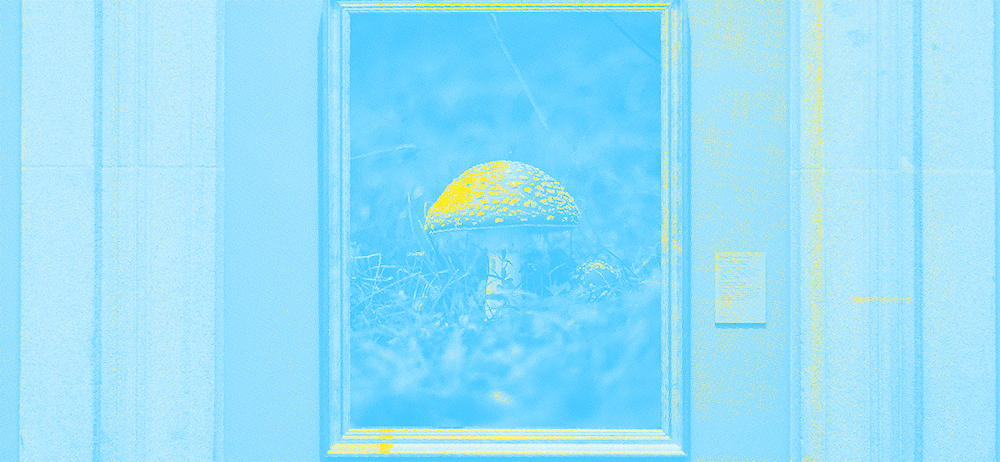“I have come to the conclusion that much can be learned about music by devoting oneself to the mushroom,” wrote the avant-garde composer John Cage in 1954. Cage was not the last artist to take on mushrooms as teachers. Mushrooms — as alien as they are inviting — continue to captivate, inspiring artists to explore non-human modes of communication, growth and survival in fungi-inspired art.
Some of the things mushrooms teach us are hopeful, as when the anthropologist Anna Lowenhaupt Tsing writes about how mushrooms help us understand our effect on the natural world. At other times they reflect our anxieties about the future, as in the popular gaming franchise “The Last of Us” or Ben Wheatley’s eco-horror film “In The Earth,” both of which feature fungi taking revenge on humankind.
For contemporary artists, particularly those working at the intersection of art and technology, fungus in all its diversity, from mushrooms to yeast cultures to microscopic bacteria, can be both subject matter and material. These artists paint with fungi, use them to speak in alien tongues and give them the keys to the museum.
The fungus is present
An early appearance of fungi-inspired art in the work of Philippe Parreno can be found in “Luminescent Mushroom Farm, 2012,” where mushroom impressions rendered in phosphorescent ink only become visible in the dark. But Parreno’s recent work presents fungi as less a subject than a collaborator. In 2018, for his first extensive solo exhibition, Parreno created a “bioreactor”: a yeast colony connected to specially programmed software that allowed the microorganisms to “control” the exhibit by triggering changes in light, sound and temperature.
Not only does this evoke the marriage of technology and biology we see in our food chains, it destabilizes what we think of as authorship, taking the idea of the interactive exhibit so far as to extend the invitation to non-human life. As Parreno said in an interview with Spike Magazine: “The exhibition will become their world, so to speak. When you stop their world, they keep repeating it and after some generations they start to mutate or remember.”
Collaborating with other life forms
Berlin-based Finnish artist Jenna Sutela is also interested in fungi-inspired art, and how microscopic life and technology can interact. In “nimiia cétiï,” Sutela used an algorithm to choreograph a supposed Martian language to the movements of Bacilus subtilis, a bacteria that many believe might be able to survive on other planets. By playing with the procedural similarities in how bacteria and computer networks operate, Sutela invests non-human life with wisdom and agency, something eco-minded technologists have promoted for years.
Sutela’s work is especially prescient when we consider the havoc one particular microorganism has wrought: the COVID-19 virus. In a recent interview with Art in America, she stated: “I like to consider my practice a collaboration with other life-forms. We’re painfully aware of this other life-form — the virus — that we live with. The pandemic is challenging our position as the planet’s dominant species.”
Spore prints
“[Artists and scientists] work very similarly,” the conceptual artist Anick Yi once said in an interview with the New York Times. “It’s just that we work almost in reverse timelines: Scientists have their hypothesis and then spend the next 20 or 30 years of their career trying to prove it, whereas artists won’t really understand what their hypothesis was until the end of their career.”
The parallel rings especially true for Yi as she has spent much of her career behaving as a scientist, with a patient willingness to allow experiments to unfold with a life of their own. In 2015, she invited 100 women to contribute bacterial samples which she collaborated with a MIT biologist to combine in a paint with which Yi composed luminous abstracts.
Working as often as she does with organic material, Yi is no stranger to fungi-inspired art. It has a tendency to bloom in the biological and chemical melting pot of her installations. When it does, she resists the urge to metaphorize, as she said to Artnet: “When you collaborate with microbes or viruses or antibodies, you don’t need a stand-in; you don’t need a metaphor. You don’t need to say, ‘This is like that’; you can just use the thing in itself.”
The world of fungus — microbial, mycelial, and deeply entangled with human life — is as much a part of our past as it is our future. For artists captivated by the former or anxious about the latter, fungi-inspired art offers fertile ground for experimenting with radical visions of how things are, and how they could be.

